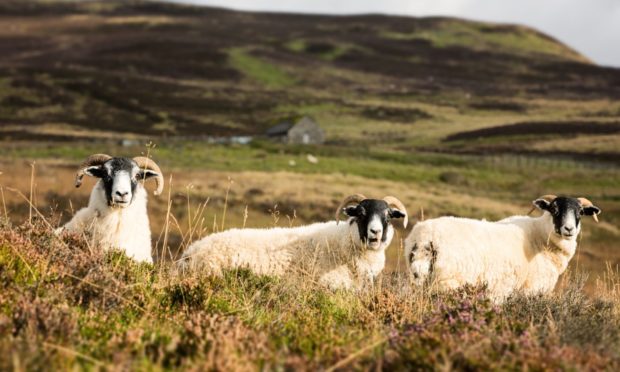I was invited to speak twice to the new hill, upland and crofting farmer-led group in recent months.
This is one of a number of sector-focused groups – the others covering suckler beef, dairy, arable and pigs – that have been established to develop advice and proposals to the Scottish Government on how to cut emissions and tackle climate change.
When I spoke at the meeting in January, I was asked to address upland agricultural and environmental challenges.
I highlighted that although there are a wide range of beneficial changes that hill farmers and crofters can make, these will not be enough on their own if the sector is to reach net-zero by 2045.
To achieve that, an additional focus on carbon sequestration – whether by peatland restoration or woodland and wetland creation – will be needed.
And I also emphasised that there is an important role for hill farmers and crofters to play in maintaining and enhancing the wide range of biodiversity that occurs in our hills and uplands.
But improving farmland biodiversity and ensuring more carbon sequestration both need to be delivered by all farming sectors in Scotland, if we are to address the climate emergency and biodiversity crisis.
It is just that the biodiversity management needed – and carbon sequestration opportunities – will vary from sector to sector.
In hill farming and crofting systems, there is likely to be more of a need to retain some form of agricultural and grazing management in order to maintain existing high nature conservation value habitats and wildlife.
While in lowland arable and dairy systems, the biodiversity need is likely to revolve around redressing the habitat simplification that has occurred through loss of habitats and inappropriate management (including lack of management) of those fragments that remain.
All of the farmer-led groups contain a mention of both biodiversity and carbon sequestration in their respective remits.
And all received analytical reports from Scottish Government, and in the case of the suckler beef group from colleagues in SRUC, which set out the wider evidence of the need for changes.
However, the reports from the groups vary in how much biodiversity management features in their recommendations. Especially with regard to what that would mean in practice within each sector, beyond the suggestion to conduct a farm-level biodiversity assessment.
And it is debatable how much simply conducting such an assessment would result in any additional action for biodiversity taking place. Especially as too few farmers appear willing to accept the need for such outputs in the future.
As colleagues and I suggested in a report published in January, a key consideration for future support policy will be to ensure that all of Scotland’s farming sectors have a common “starting point” – in terms of a need to provide more biodiversity benefits on the ground – before delivering more sector-specific measures.
Whether that common starting point is delivered through increased regulation or greater environmental conditionality on support payments – or some combination of both – is still open to discussion and debate.
But it is clear that anyone in receipt of public funding from rural support payments in Scotland from 2024 – if not earlier – will need to deliver multiple outcomes, in addition to agricultural products, if Scotland is to achieve its ambitious targets regarding the food and drink sector, climate change, biodiversity and environmental health.
- Professor Davy McCracken is head of SRUC’s hill and mountain research centre at Crianlarich in Perthshire.










